高一英语必修四人教版Unit4 Body language 课文知识点 课件 (共18张PPT)
文档属性
| 名称 | 高一英语必修四人教版Unit4 Body language 课文知识点 课件 (共18张PPT) | 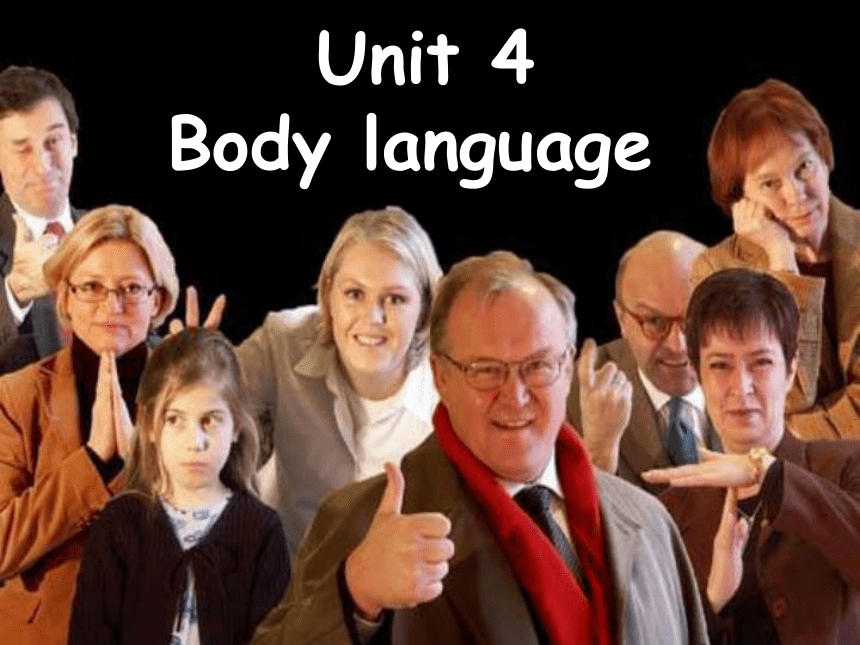 | |
| 格式 | ppt | ||
| 文件大小 | 2.0MB | ||
| 资源类型 | 教案 | ||
| 版本资源 | 人教版(新课程标准) | ||
| 科目 | 英语 | ||
| 更新时间 | 2020-11-15 17:43:50 | ||
图片预览

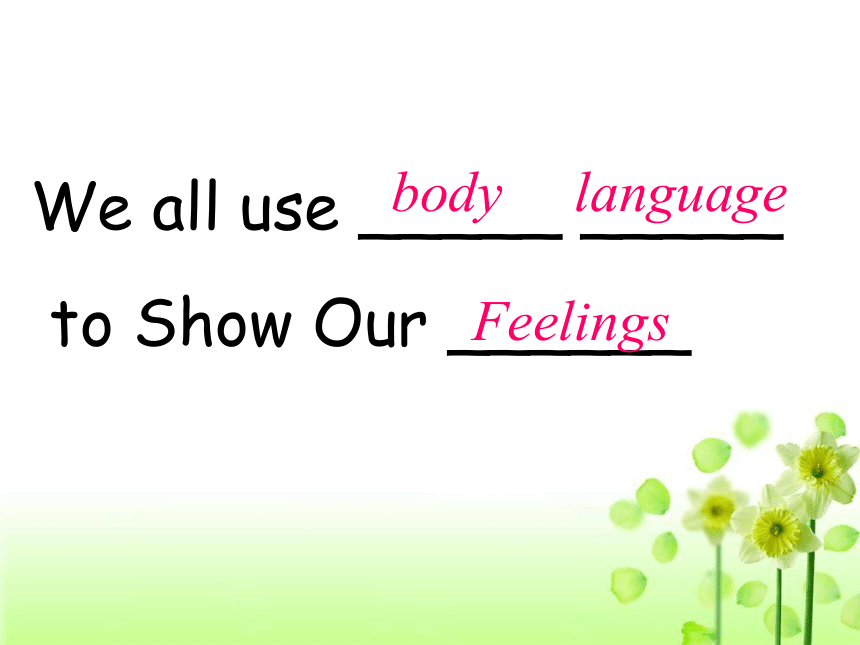
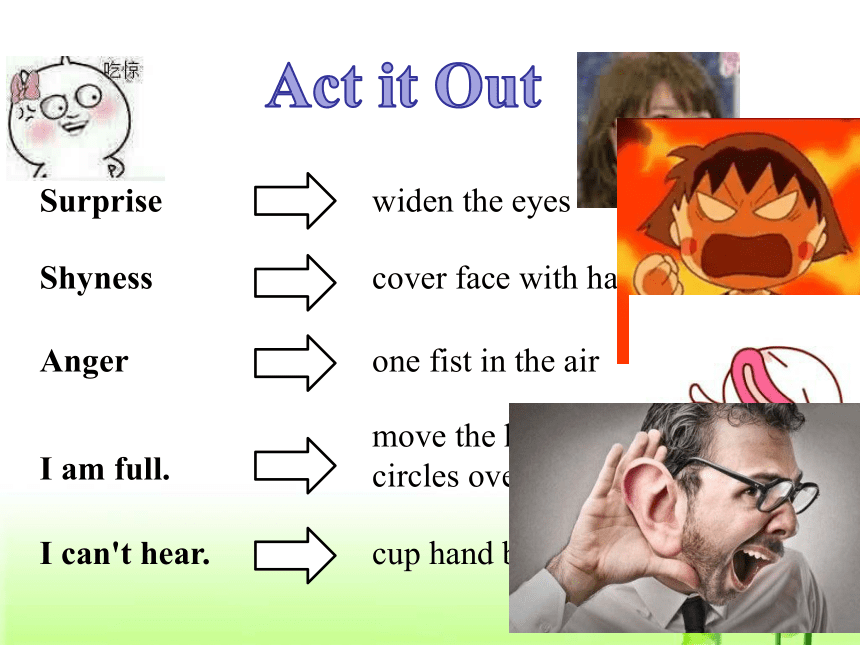
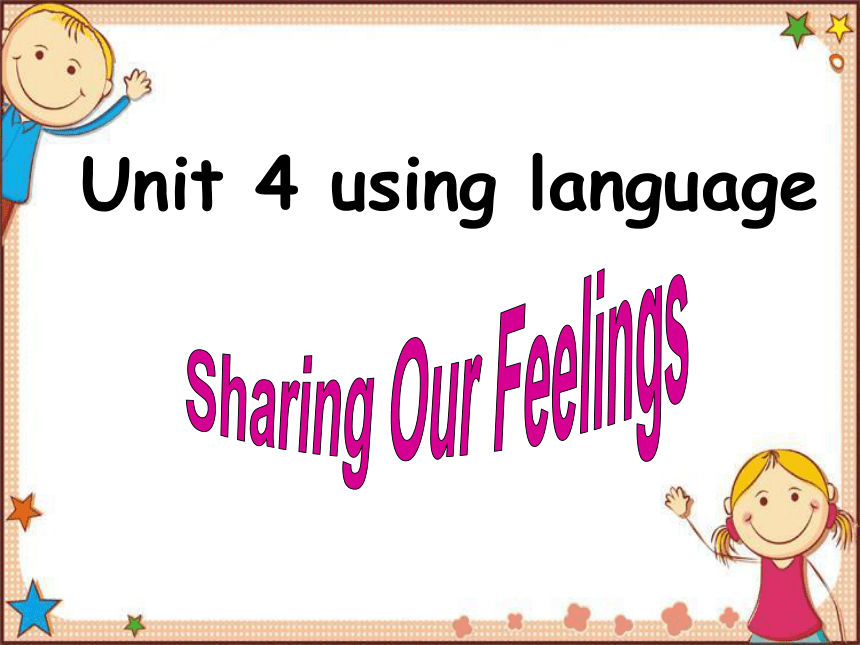

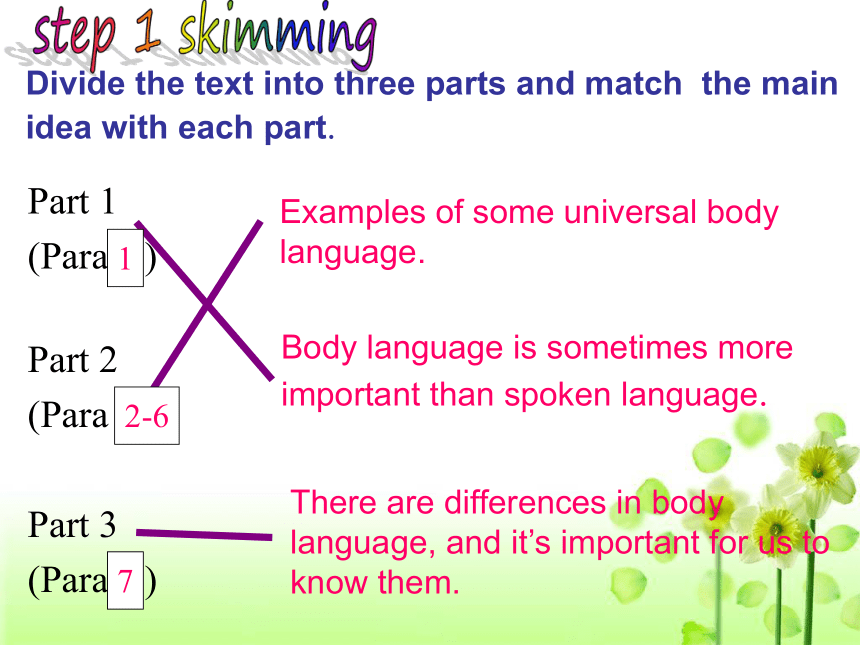
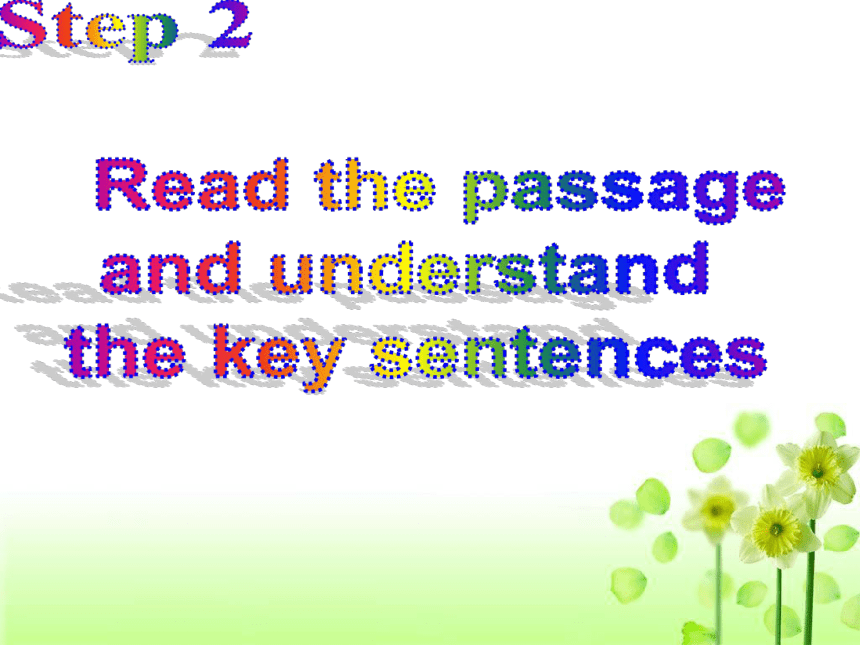
文档简介
Unit 4
Body language
We all use _____ _____
to Show Our ______
body
language
Feelings
Surprise
I can't hear.
Shyness
Anger
I am full.
widen the eyes
cover face with hands
one fist in the air
move the hand in circles over the belly
cup hand behind ear
Unit 4 using language
employee [?m?pl??i:] n. 雇员
frown [fra?n] vi. 皱眉;蹙额
misread [?m?s'ri:d] vt. 读错;误解
facial ['fe??l] adj. 面部的
function ['f??k?n] n. 作用;功能;职能vi. 起作用;运转
ease [i:z] n. 安逸;舒适 vt. 减轻(痛苦、忧虑)
at ease 舒适;快活;自由自在
truly [‘tru:l?] adv. 真实地 真诚地 真正地
false [f?:ls] adj. 错误的;假的
anger ['??ɡ?(r)]? n. 怒气;怒火
lose face 丢脸
turn one’s back to 背对;背弃
fist [f?st] n. 拳头
yawn [j?:n] vi. 打呵欠
respectful [r??spektfl] adj. 恭敬的
subjective [s?b?d?ekt?v] adj. 主观的
hug [h?ɡ] vi. & vt. 拥抱
rank [r??k] n. 等级;军衔
cassette [k??set] n. 磁带
________n.雇主 _______v. 雇佣
employer
employ
(__________ ___________)
misread
misread
______n.脸
face
____ adj容易的
easy
_____adj 真正的真实的
_______n 真相
true
truth
_____adj 生气的
_______adv.生气地=
angry
________v. n. 尊敬;尊重
respect
________n. 主观主语主题 科目
______n. 客观 宾语 目标 v. 反对
__________adj. 客观的真实的
subject
object
objective
function as 起…作用;用作…
_____________面部表情
facial expression
angrily
in anger
hug—hugged---hugged
Divide the text into three parts and match the main idea with each part.
Part 1
(Para ? )
Part 2
(Para ? )
Part 3
(Para ? )
Body language is sometimes more important than spoken language.
Examples of some universal body language.
There are differences in body language, and it’s important for us to know them.
1
2-6
7
Body language is one of the most powerful means of communication, often even more powerful than spoken language.
身势语是最强有力的交际手段之一,甚至经常比口头语言更有力量。
People around the world show all kinds of feelings, wishes and attitudes 〖that they might never speak aloud 〗.
世界各地的人们表达各种各样的情感、愿望和态度,他们可能从来不会大声地说出来。
It is possible to "read" others around us, even if they do not intend for us to catch their unspoken communication.
Of course, body language can be misread, but many gestures and actions are universal.
当然,身势语可能会被误解,但是很多手势和动作是具有普遍性的。
强有力的交流方式
means “方式 方法 手段”(单复数同形)
搭配 by no means “绝不” by means of “通过 借助于”“
定语从句
attitude to/ towards sb/ sth
intend (for)sb to do sth打算让某人做某事
intend to do sth 打算做某事
be intended for 专为…而设计或使用
= even though 即使 尽管
misread sth as sth 把…误解为…
“读懂”我们周围的人的意识是有可能的,即便是人们并不想让我们捕捉到他们没有说出来的信息。
最普遍使用的面部表情当然是微笑——其作用是表示快乐和安人心静。
然而微笑并不总是意味着我们是真的快乐。
世界上微笑可能是假的,用来掩盖其他情绪,比如生气、害怕和烦恼。
还有不愉快的微笑,比如当某人“丢了面子”就会用微笑来掩饰。
但是,微笑的一般目的是表达好的情绪。
function as 起…作用
be to do sth 要做某事
使某人安心
意味着… that引导的宾语从句
现在分词做状语,与逻辑主语smiles 之间是主动关系
be to do sth 要做某事
From the time we are babies, we show unhappiness or anger by frowning.
In most places around the world, 〖 frowning and turning one's back to someone 〗 shows anger.
〖 Making a fist and shaking it 〗 almost always means that someone is angry and threatening another person.
从孩提时候起,我们就通过皱眉来表示不高兴或者愤怒。
在世界上大多数地方,皱眉或者背对着某人都表示发怒。
把手握紧,朝着别人晃拳头几乎总是 意味着愤怒并且威胁别人。
动名词做主语,表示经常性、习惯性的动作
动名词做主语,表示经常性、习惯性的动作
threaten 威胁
There are many ways around the world to show agreement, but 〖 nodding the head up and down 〗 is used for agreement, almost worldwide.
Most people also understand that 〖shaking the head from side to side〗 means disagreement or refusal.
大多数人也都知道左右摇头表示不同意或拒绝做某事。
世界上有很多方式来表示同意,但是几乎全世界都用上下点头来表示同意
nod –nodded—nodded—nodding点头
up and down 上下地
动名词做主语,表示经常性、习惯性的动作
动名词做主语,表示经常性、习惯性的动作
refuse to do sth拒绝做某事
refusal (n)
How about showing that I am bored?
〖 Looking away from people or yawning 〗will, in most cases, make me appear to be uninterested.
However, if I turn toward and look at someone or something, people from almost every culture will think that I am interested.
如何来表示我很厌烦呢?
在多数情况下,把眼光从人们身上移开或者打个哈欠,会使我看上去(对此人或此事)不感兴趣。
但是如果我转身面对某人或者某事,几乎每一个文化背景的人都会认为我(对此人或此事)感兴趣。
如果我转动着眼球,把头扭向一边,很可能是我不相信或者不喜欢所听到的话。
bore---boring---bored
有类似用法的动词还有: excite ,satisfy , move , interest, shock , disappoint , puzzle , surprise , annoy , astonish,amaze 等.
动名词做主语,表示经常性、习惯性的动作
在大多数情况下
make sb do sth 使某人做某事
appear to do sth 似乎做某事
转动眼球
likely 副词“很可能”放在most 或very后面
形容词“可能的” be likely to do sth
It is likely that
If I roll my eyes and turn my head away, I most likely do not believe 〖 what I am hearing 〗 or do not like it.
〖 Being respectful to people 〗 is subjective, based on each culture, but in general it is probably not a good idea to give a hug to a boss or teacher.
In almost every culture, it is not usually good to stand too close to someone of a higher rank.
〖 Standing at a little distance with open hands 〗 will show that I am willing to listen.
动名词做主语,表示经常性、习惯性的动作
based on each culture 过去分词做状语
be based on 以…为基础;根据…
根据每一种文化,对人们表示尊重都是带有主观性的。但是一般来说,拥抱你的老板或老师很可能是不妥当的。
in general=
generally speaking 一般来说
在几乎每一种文化里,站在离级别很高的人太近都不太好。
高级别
站的有一定的距离,把手微微张开,会表示我愿意倾听。
动名词做主语,表示经常性、习惯性的动作
be willing to do sth 乐意做某事
With so many cultural differences between people, it is great to have some similarities in body language.
We can often be wrong about each other, so it is an amazing thing that we understand each other as well as we do!
人们之间的文化差异非常多,但好在身体语言有一些相似之处。
similarities 相似性
similar 相似的 类似的 be similar to
尽管我们常常会彼此误解,但我们仍能做到彼此理解,这真是件令人惊奇的事。
misunderstand
as well as 像…一样好
My friends and I planned to have a trip to Lijiang.
_________(hear) the good news, I was very happy.
表时间
Hearing
The mountain was so attractive, ______(make) us fall in love with it at once.
Many people walked in the ancient town,_______( take) photos.
_______(feel) tired, we decided to have a rest.
making
表结果
taking
表伴随
Feeling
表原因
用ease短语的适当形式填空。
Now he can set his mind _____ ease because he has passed the examination _______ease.
This plan should ________traffic congestion in the town.
at
with
ease
Please find out the correct English sentence to describe each picture.
Smoking is not allowed here.
Fishing is not permitted here.
Swimming is not allowed here.
Body language
We all use _____ _____
to Show Our ______
body
language
Feelings
Surprise
I can't hear.
Shyness
Anger
I am full.
widen the eyes
cover face with hands
one fist in the air
move the hand in circles over the belly
cup hand behind ear
Unit 4 using language
employee [?m?pl??i:] n. 雇员
frown [fra?n] vi. 皱眉;蹙额
misread [?m?s'ri:d] vt. 读错;误解
facial ['fe??l] adj. 面部的
function ['f??k?n] n. 作用;功能;职能vi. 起作用;运转
ease [i:z] n. 安逸;舒适 vt. 减轻(痛苦、忧虑)
at ease 舒适;快活;自由自在
truly [‘tru:l?] adv. 真实地 真诚地 真正地
false [f?:ls] adj. 错误的;假的
anger ['??ɡ?(r)]? n. 怒气;怒火
lose face 丢脸
turn one’s back to 背对;背弃
fist [f?st] n. 拳头
yawn [j?:n] vi. 打呵欠
respectful [r??spektfl] adj. 恭敬的
subjective [s?b?d?ekt?v] adj. 主观的
hug [h?ɡ] vi. & vt. 拥抱
rank [r??k] n. 等级;军衔
cassette [k??set] n. 磁带
________n.雇主 _______v. 雇佣
employer
employ
(__________ ___________)
misread
misread
______n.脸
face
____ adj容易的
easy
_____adj 真正的真实的
_______n 真相
true
truth
_____adj 生气的
_______adv.生气地=
angry
________v. n. 尊敬;尊重
respect
________n. 主观主语主题 科目
______n. 客观 宾语 目标 v. 反对
__________adj. 客观的真实的
subject
object
objective
function as 起…作用;用作…
_____________面部表情
facial expression
angrily
in anger
hug—hugged---hugged
Divide the text into three parts and match the main idea with each part.
Part 1
(Para ? )
Part 2
(Para ? )
Part 3
(Para ? )
Body language is sometimes more important than spoken language.
Examples of some universal body language.
There are differences in body language, and it’s important for us to know them.
1
2-6
7
Body language is one of the most powerful means of communication, often even more powerful than spoken language.
身势语是最强有力的交际手段之一,甚至经常比口头语言更有力量。
People around the world show all kinds of feelings, wishes and attitudes 〖that they might never speak aloud 〗.
世界各地的人们表达各种各样的情感、愿望和态度,他们可能从来不会大声地说出来。
It is possible to "read" others around us, even if they do not intend for us to catch their unspoken communication.
Of course, body language can be misread, but many gestures and actions are universal.
当然,身势语可能会被误解,但是很多手势和动作是具有普遍性的。
强有力的交流方式
means “方式 方法 手段”(单复数同形)
搭配 by no means “绝不” by means of “通过 借助于”“
定语从句
attitude to/ towards sb/ sth
intend (for)sb to do sth打算让某人做某事
intend to do sth 打算做某事
be intended for 专为…而设计或使用
= even though 即使 尽管
misread sth as sth 把…误解为…
“读懂”我们周围的人的意识是有可能的,即便是人们并不想让我们捕捉到他们没有说出来的信息。
最普遍使用的面部表情当然是微笑——其作用是表示快乐和安人心静。
然而微笑并不总是意味着我们是真的快乐。
世界上微笑可能是假的,用来掩盖其他情绪,比如生气、害怕和烦恼。
还有不愉快的微笑,比如当某人“丢了面子”就会用微笑来掩饰。
但是,微笑的一般目的是表达好的情绪。
function as 起…作用
be to do sth 要做某事
使某人安心
意味着… that引导的宾语从句
现在分词做状语,与逻辑主语smiles 之间是主动关系
be to do sth 要做某事
From the time we are babies, we show unhappiness or anger by frowning.
In most places around the world, 〖 frowning and turning one's back to someone 〗 shows anger.
〖 Making a fist and shaking it 〗 almost always means that someone is angry and threatening another person.
从孩提时候起,我们就通过皱眉来表示不高兴或者愤怒。
在世界上大多数地方,皱眉或者背对着某人都表示发怒。
把手握紧,朝着别人晃拳头几乎总是 意味着愤怒并且威胁别人。
动名词做主语,表示经常性、习惯性的动作
动名词做主语,表示经常性、习惯性的动作
threaten 威胁
There are many ways around the world to show agreement, but 〖 nodding the head up and down 〗 is used for agreement, almost worldwide.
Most people also understand that 〖shaking the head from side to side〗 means disagreement or refusal.
大多数人也都知道左右摇头表示不同意或拒绝做某事。
世界上有很多方式来表示同意,但是几乎全世界都用上下点头来表示同意
nod –nodded—nodded—nodding点头
up and down 上下地
动名词做主语,表示经常性、习惯性的动作
动名词做主语,表示经常性、习惯性的动作
refuse to do sth拒绝做某事
refusal (n)
How about showing that I am bored?
〖 Looking away from people or yawning 〗will, in most cases, make me appear to be uninterested.
However, if I turn toward and look at someone or something, people from almost every culture will think that I am interested.
如何来表示我很厌烦呢?
在多数情况下,把眼光从人们身上移开或者打个哈欠,会使我看上去(对此人或此事)不感兴趣。
但是如果我转身面对某人或者某事,几乎每一个文化背景的人都会认为我(对此人或此事)感兴趣。
如果我转动着眼球,把头扭向一边,很可能是我不相信或者不喜欢所听到的话。
bore---boring---bored
有类似用法的动词还有: excite ,satisfy , move , interest, shock , disappoint , puzzle , surprise , annoy , astonish,amaze 等.
动名词做主语,表示经常性、习惯性的动作
在大多数情况下
make sb do sth 使某人做某事
appear to do sth 似乎做某事
转动眼球
likely 副词“很可能”放在most 或very后面
形容词“可能的” be likely to do sth
It is likely that
If I roll my eyes and turn my head away, I most likely do not believe 〖 what I am hearing 〗 or do not like it.
〖 Being respectful to people 〗 is subjective, based on each culture, but in general it is probably not a good idea to give a hug to a boss or teacher.
In almost every culture, it is not usually good to stand too close to someone of a higher rank.
〖 Standing at a little distance with open hands 〗 will show that I am willing to listen.
动名词做主语,表示经常性、习惯性的动作
based on each culture 过去分词做状语
be based on 以…为基础;根据…
根据每一种文化,对人们表示尊重都是带有主观性的。但是一般来说,拥抱你的老板或老师很可能是不妥当的。
in general=
generally speaking 一般来说
在几乎每一种文化里,站在离级别很高的人太近都不太好。
高级别
站的有一定的距离,把手微微张开,会表示我愿意倾听。
动名词做主语,表示经常性、习惯性的动作
be willing to do sth 乐意做某事
With so many cultural differences between people, it is great to have some similarities in body language.
We can often be wrong about each other, so it is an amazing thing that we understand each other as well as we do!
人们之间的文化差异非常多,但好在身体语言有一些相似之处。
similarities 相似性
similar 相似的 类似的 be similar to
尽管我们常常会彼此误解,但我们仍能做到彼此理解,这真是件令人惊奇的事。
misunderstand
as well as 像…一样好
My friends and I planned to have a trip to Lijiang.
_________(hear) the good news, I was very happy.
表时间
Hearing
The mountain was so attractive, ______(make) us fall in love with it at once.
Many people walked in the ancient town,_______( take) photos.
_______(feel) tired, we decided to have a rest.
making
表结果
taking
表伴随
Feeling
表原因
用ease短语的适当形式填空。
Now he can set his mind _____ ease because he has passed the examination _______ease.
This plan should ________traffic congestion in the town.
at
with
ease
Please find out the correct English sentence to describe each picture.
Smoking is not allowed here.
Fishing is not permitted here.
Swimming is not allowed here.
同课章节目录
